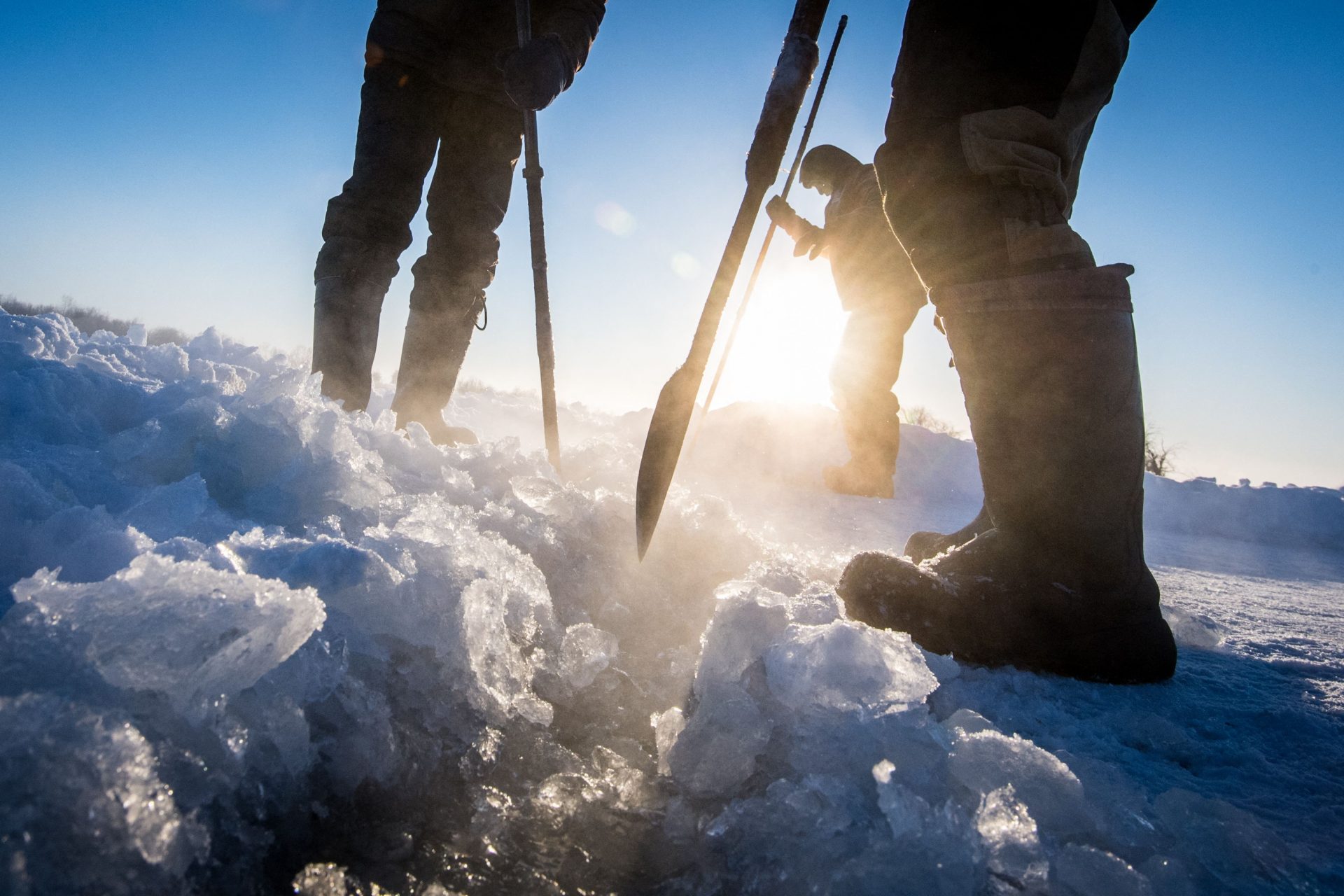An ancient zombie virus from Siberian permafrost has been resurrected
Scientists have revived several strains of ancient virus taken from samples of Russia’s Siberian permafrost according to a study published in February.
Jean-Michel Claverie is an Emeritus Professor of Medicine and Genomics at Aix-Marseille University and has been hunting ancient pathogens for decades in order to understand “the risks posed by frozen viruses,” according to CNN.
Photo by YouTube @NASEM_Health
Claverie told CNN’s Katie Hunt that he was searching for what the professor called “zombie viruses” in samples taken from Russia’s Siberian permafrost.
The Aix-Marseille professor studies a very particular type of virus according to Hunt, one that he first discovered in 2003.
Photo by YouTube @NASEM_Health
“Known as giant viruses, they are much bigger than the typical variety and visible under a regular light microscope, rather than a more powerful electron microscope—which makes them a good model for this type of lab work,” Hunt wrote.
“His efforts to detect viruses frozen in permafrost were partly inspired by a team of Russian scientists who in 2012 revived a wildflower from a 30,000-year-old seed tissue found in a squirrel’s burrow,” the CNN journalist added.
Photo by Maria Khoreva, own work, https://en.wikipedia.org/wiki/Silene_stenophylla#/media/File:Silene_stenophylla_115390032.jpg
In 2014, Claverie and his team of scientists were able to successfully revive a virus they discovered in permafrost by inserting it into a cell culture according to Hunt.
Photo by YouTube @NASEM_Health
Claverie revived a second ancient virus in 2015 and his latest work, which was published in the journal Viruses on February 18th, saw the professors bring to life multiple strains of prehistoric viruses.
“Claverie and his team isolated several strains of ancient virus from multiple samples of permafrost taken from seven different places across Siberia and showed they could each infect cultured amoeba cells,” Hunt wrote.
“Those latest strains represent five new families of viruses, on top of the two he had revived previously,” the CNN journalist continued.
The oldest of the viruses resurrected by Claverie and his team was roughly 48,800 years old according to Hunt, and the youngest was 27,000 years old.
Claverie’s discoveries are viewed with curiosity by most according to Hunt, but the professor believes that his work has revealed a real danger lurking in humanity's future.
“We view these amoeba-infecting viruses as surrogates for all other possible viruses that might be in the permafrost,” Claverie told CNN.
“We see the traces of many, many, many other viruses,” Claverie continued. “So we know they are there. We don’t know for sure that they are still alive."
“... if the amoeba viruses are still alive, there is no reason why the other viruses will not be still alive, and capable of infecting their own hosts,” the professor added.
The Global Alliance for Vaccines and Immunization (GAVI) has recognized the potential threat posed by the thawing of Earth’s permafrost as a result of Climate Change.
“Melting ice and thawing permafrost can lead to the opening of a ‘Pandora’s Box’ of pathogens,” the alliance wrote data from the United Nations Intergovernmental Panel on Climate Change 2022 assessment report.
The theory that melting permafrost could unleash old viruses on new hosts isn’t as outlandish as it might seem at first.
In 2022, a study published in One Earth found that much of the world's permafrost “is a reservoir of mostly uncharacterized microorganisms and viruses, many of which could be viable.”
Even more worrying than the thought of melting permafrost infecting humans with ancient viruses is the fact that we already know it happened.
In 2016, a mysterious outbreak of anthrax in Siberia was thought to be caused by the thawing of permafrost according to NPR’s Michaeleen Doucleff.
“Officials don't know exactly how the outbreak started, but the current hypothesis is almost unbelievable: A heat wave has thawed the frozen soil there and with it, a reindeer carcass infected with anthrax decades ago,” Doucleff wrote in 2016.
Photo by Twitter @siberian_times
“Some scientists think this incident could be an example of what climate change may increasingly surface in the tundra,” the NPR journalist continued.
Photo by Twitter @siberian_times
According to Doucleff, Russian officials later discovered that the anthrax outbreak was caused by the thawing of a 75-year-old reindeer carcass.
A summer heat wave melted the layer of permafrost that had contained the decades-old reindeer and spores eventually infected grazing reindeer nearby, the NPR journalist noted.
While the scenario didn’t prove that ancient viruses could infect humans, it did show that the dangers lurking in Earth’s permafrost could rear their ugly heads…
More for you
Top Stories







































